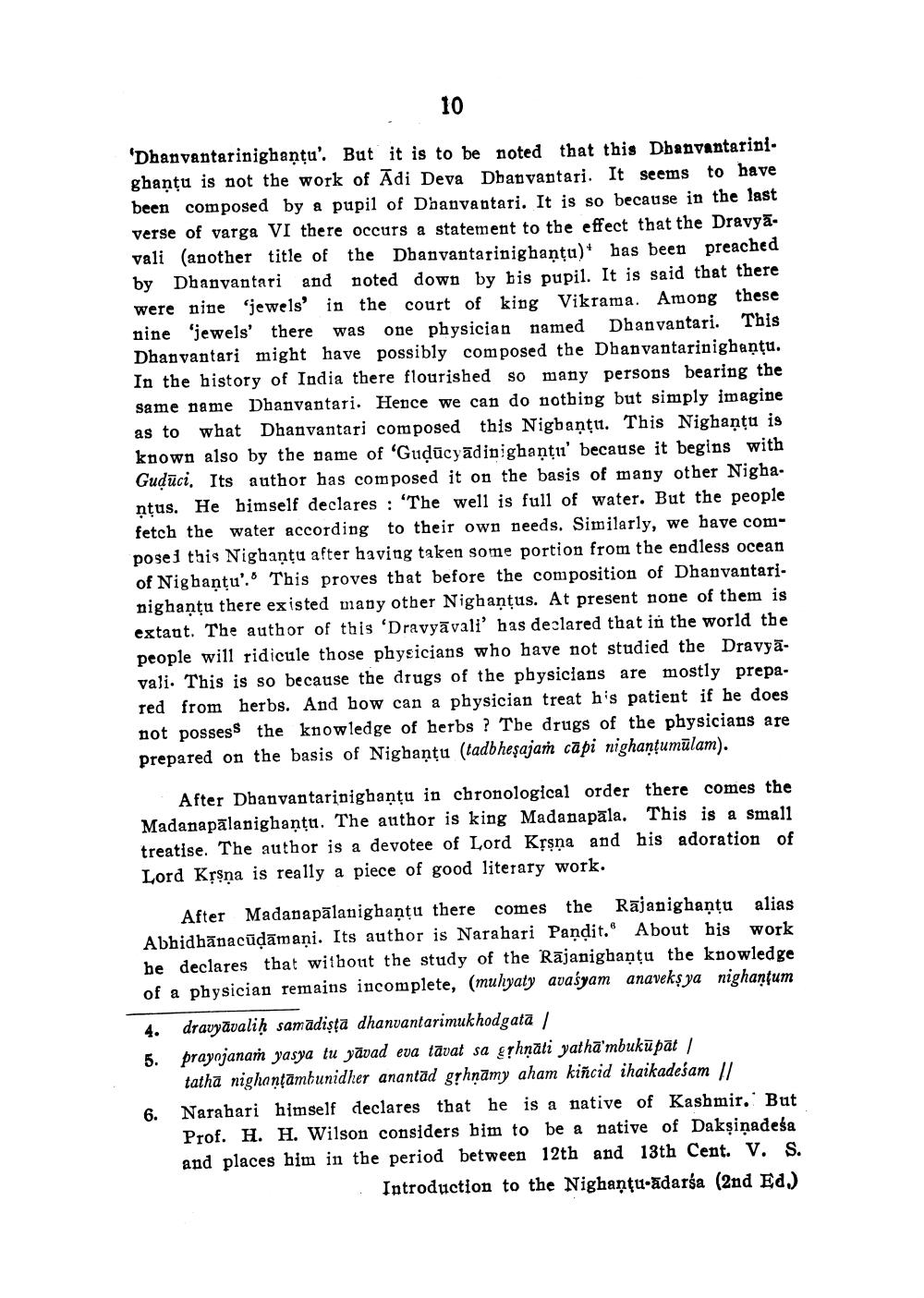________________ 10 'Dhanvantarinighantu'. But it is to be noted that this Dhanvantarini. ghantu is not the work of Adi Deva Dhanvantari. It seems to have been composed by a pupil of Dhanvantari. It is so because in the last verse of varga VI there occurs a statement to the effect that the Dravya. vali (another title of the Dhanvantarinig hantu)* has been preached by Dhanyantari and noted down by bis pupil. It is said that there were nine 'jewels' in the court of king Vikrama. Among these nine jewels' there was one physician named Dhanvantari. This Dhanvantari might have possibly composed the Dhanvantarinighantu. In the history of India there flourished so many persons bearing the same name Dhanvantari. Hence we can do nothing but simply imagine as to what Dhanvantari composed this Nigbantu. This Nighantu is known also by the name of "Gulucyadipighantu' because it begins with Guduci. Its author has composed it on the basis of many other Nighantus. He himself declares : 'The well is full of water. But the people fetch the water according to their own needs. Similarly, we have composed this Nighanku after having taken some portion from the endless ocean of Nighantu'.' This proves that before the composition of Dhanvantarinighantu there existed many other Nighantus. At present none of them is extant. The author of this 'Dravyavali' has declared that in the world the people will ridicule those physicians who have not studied the Dravyavali. This is so because the drugs of the physicians are mostly prepared from herbs. And how can a physician treat his patient if he does not possess the knowledge of herbs ? The drugs of the physicians are prepared on the basis of Nigbantu (tadb hesajam capi nighantumulam). After Dhanvantarinighantu in chronological order there comes the Madanapalapighantu. The author is king Madanapala. This is a small treatise. The author is a devotee of Lord Kssna and his adoration of Lord Krsna is really a piece of good literary work. After Madanapalanighantu there comes the Rajanighantu alias Abhidhanaculamani. Its author is Narahari Pandit. About his work be declares that without the study of the Rajanighantu the knowledge of a physician remains incomplete, (muhyaty avasyam anaveksya nighantum 4. dravyavalih samadista dhanvantarimukhodgata / 5. prayojanam yasya tu yavad eva tavat sa gyhnali yatha'mbukupat / tatha nighantambunidher anantad glhnamy aham kincid ihaikadesam // Narahari himself declares that he is a native of Kashmir. But Prof. H. H. Wilson considers bim to be a native of Daksinadesa and places him in the period between 12th and 13th Cent. v. S. Introduction to the Nighantu-adarsa (2nd Ed.)




